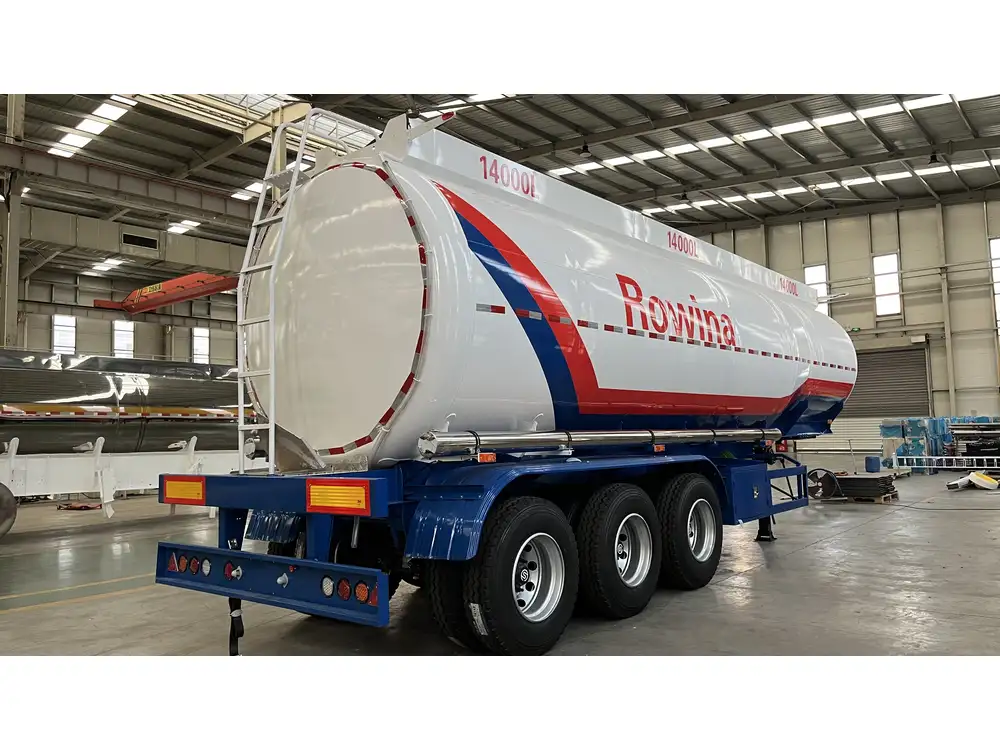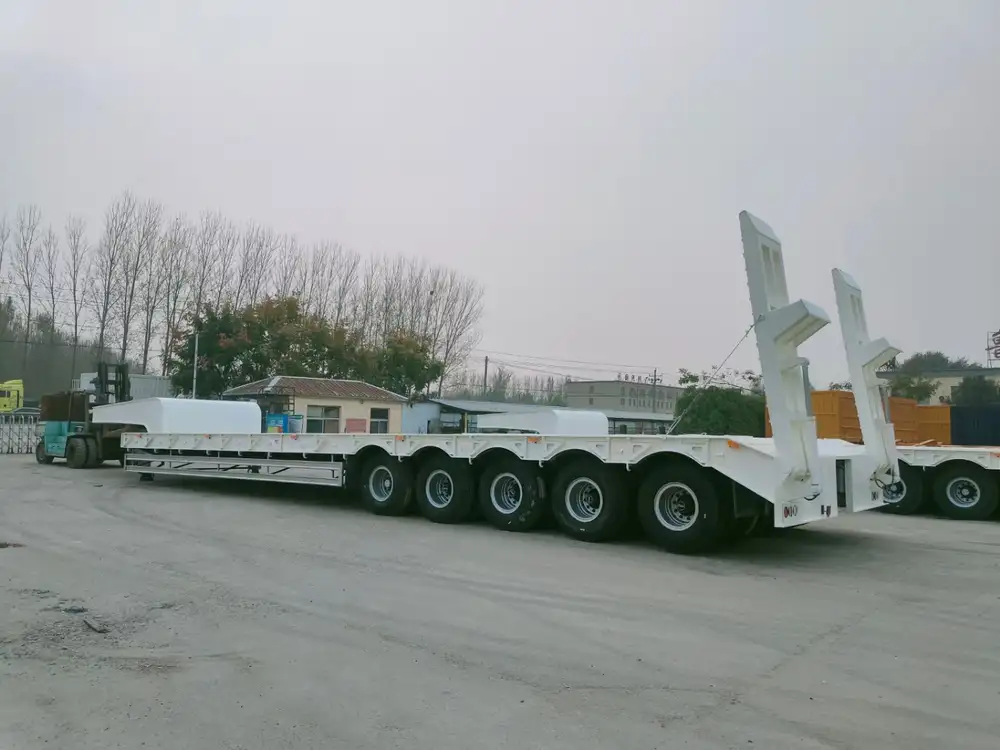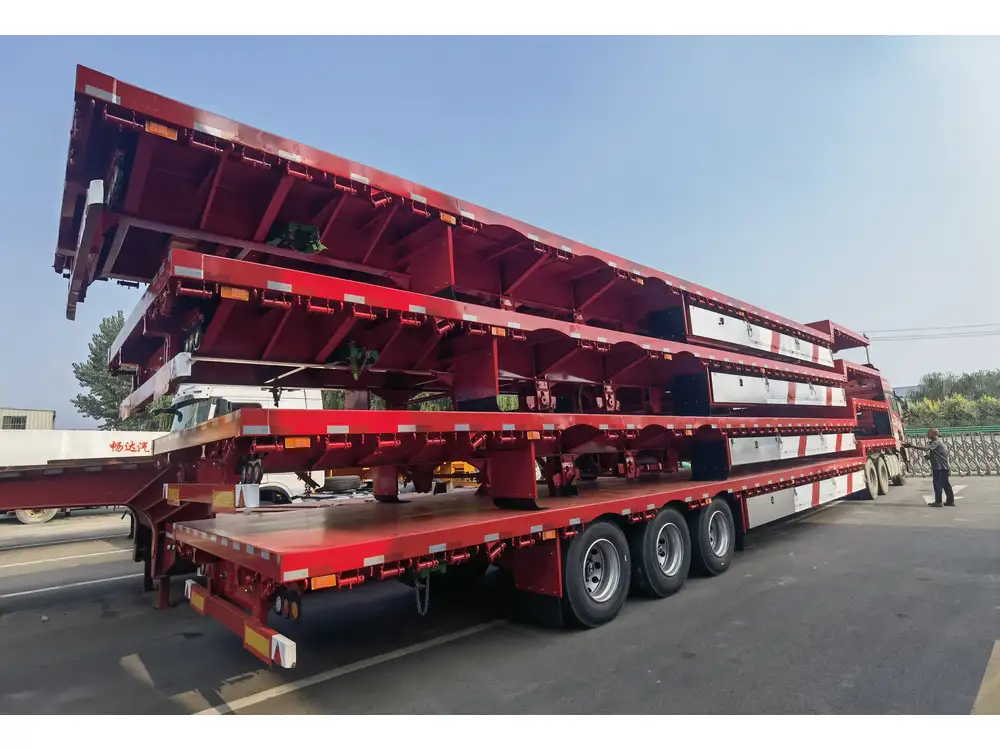Understanding the Risks: A Closer Look at Semi-Trailer Operations
Operating a semi-trailer is a demanding task that requires immense skill and constant vigilance. In a sector where efficiency and speed matter, the safety of semi-trailer drivers should always be a priority. Unfortunately, accidents occur, leading to irreversible consequences, including fatalities. Recent incidents in Ohio serve as a stark reminder of the inherent dangers involved in semi-trailer transport.
The Semi-Trailer Dilemma: Navigating Highways Safely
Driving a semi-trailer encompasses a unique set of challenges due to the vehicle’s size, weight, and maneuverability in various environments. These vehicles can weigh up to 80,000 pounds, making them difficult to stop or maneuver quickly. The sheer weight and size of a semi-trailer impose additional risks not just to the driver but also to other road users. Understanding these challenges is essential for fostering a safe driving environment.
| Semi-Trailer Facts | Details |
|---|---|
| Maximum Length | Up to 53 feet |
| Maximum Weight | Up to 80,000 pounds |
| Stopping Distance | 40% longer than a passenger vehicle |
| Blind Spots | Multiple, particularly on right side |
| Maneuverability | Limited in tight spaces |

The Tragic Incident: A Review of Accidents Involving Semi-Trailer Drivers in Ohio
Ohio has witnessed several heart-wrenching incidents involving semi-trailer drivers. The recent fatal crash highlights the importance of understanding the circumstances leading up to such tragedies. Factors contributing to these accidents often include driver fatigue, adverse weather conditions, distracted driving, and mechanical failures.
Case Study: The Impact of a Fatally Injured Driver
The case of a semi-trailer driver killed in a separate crash in Ohio exemplifies the magnitude of risks that drivers face. While specifics vary by incident, common threads frequently emerge that can and should interest everyone. Here are key elements to consider:
Driver Fatigue and Its Consequences: Long hours on the road can lead to fatigue, a significant factor in accidents. Drivers often exceed the legal limits for hours behind the wheel, endangering their lives and those around them.
The Role of Weather Conditions: Wet or icy roads, heavy rain, and rapidly changing weather can severely impact driving conditions. Slips and skids become far more likely under such circumstances.
Mechanical Failures: Regular maintenance is crucial for semi-trailer operations. A brake failure or tire blowout can rapidly lead to loss of control, resulting in catastrophic outcomes.
Distracted Driving: With the increasing use of mobile devices, distracted driving has burgeoned into a significant cause of accidents. A moment’s inattention can lead to life-altering consequences.
Comparative Analysis: Fatality Rates in Semi-Trailer Accidents
| Year | Number of Fatalities in Ohio | Cause of Fatalities |
|---|---|---|
| 2021 | 78 | Driver Error, Fatigue |
| 2022 | 85 | Weather Conditions |
| 2023 | 100 | Distracted Driving |
The above table indicates a worrisome trend in fatalities involving semi-trailer drivers. The compounding effects of driver error, adverse weather, and distractions highlight the urgent need for enhanced safety measures.

Proactive Measures: Enhancing Semi-Trailer Safety
Implementing Robust Safety Regulations
The need for effective regulations to ensure safety on the roads cannot be overstated. Policy frameworks must evolve to address emerging challenges. Some proposed measures include:
Regular Training Programs: Continuous education and training can fortify drivers’ skills and awareness, addressing the latest road safety techniques and technologies.
Strict Monitoring of Driving Hours: Implementing stricter regulations on driving hours can decrease incidents of fatigue-driven accidents.
Mandatory Vehicle Inspections: Ensuring that all semi-trailers undergo regular mechanical inspections can minimize the risk of accidents due to mechanical failure.
Technological Innovations: A New Era of Safety
Advancements in technology can significantly reduce risks on the road. Several innovative solutions are now available to aid semi-trailer drivers:
Collision Warning Systems: These utilize sensors and cameras to detect obstacles and warn drivers of potential collisions.
Automatic Emergency Braking Systems: Such systems can intervene if the driver fails to respond to a perilous situation, helping to prevent accidents.
Vehicle Tracking Systems: Real-time tracking enables fleet managers to monitor driver fatigue levels and ensure compliance with safety regulations.

Community Engagement: Building a Culture of Safety
Community involvement plays a pivotal role in promoting road safety. Encouraging public awareness campaigns, advocating for responsible driving practices, and providing support for drivers can lead to meaningful changes. Here’s how community engagement can help:
Educational Workshops: Conducting workshops which address safe driving practices can greatly benefit both commercial drivers and the general public.
Partnerships with Local Organizations: Collaborating with schools and local businesses can facilitate road safety initiatives and create a network of shared responsibility.
Support Groups for Drivers: Establishing support networks can assist drivers in managing stress and fatigue, encouraging them to seek help when necessary.
Practical Tips for Driving Semi-Trailers Safely
The crucial aspect of safety incident prevention lies within the hands of drivers. Here are practical strategies to improve their safety on the road:
Pre-Trip Safety Checks
Prior to embarking on any journey, drivers should conduct thorough inspections of the semi-trailer. Focus areas include:
Tires: Check for sufficient tread depth, appropriate pressure, and signs of wear.
Brakes: Ensure brakes are fully functional and check for any leaks.
Lights and Reflectors: Confirm that all lights are operational, including indicators and brake lights.

Strategic Route Planning
Before hitting the road, drivers must consider the route they will take. Factors to keep in mind include:
Weather Conditions: Monitor forecasts and opt for alternate routes in case of severe weather.
Rest Stops: Plan for regular breaks to combat fatigue, particularly on long hauls.
Traffic Patterns: Familiarize yourself with high traffic areas or known problem zones to avoid potential bottlenecks.
Stress Management Techniques
Driving while stressed can severely impair decision-making abilities. Implementing stress-relief techniques can support clearer thinking and better focus. Techniques include:
Mindfulness Practices: Simple breathing exercises can help drivers maintain calm and composure on the road.
Routine Breaks: Stopping at regular intervals helps unwind and recharge, crucial for enduring long drives.
Conclusion: Commitment to Road Safety
In light of the tragic events involving semi-trailer drivers in Ohio, the critical importance of prioritizing safety on our roads cannot be overstated. Through the collective efforts of manufacturers, drivers, and the surrounding community, we can strive for a future where semi-trailer operations are safer for everyone. By implementing robust regulations, leveraging technology, and fostering community engagement, we can work towards significantly reducing accidents. Sustained focus on these areas not only honors the memories of those lost but also protects future generations on the road.



